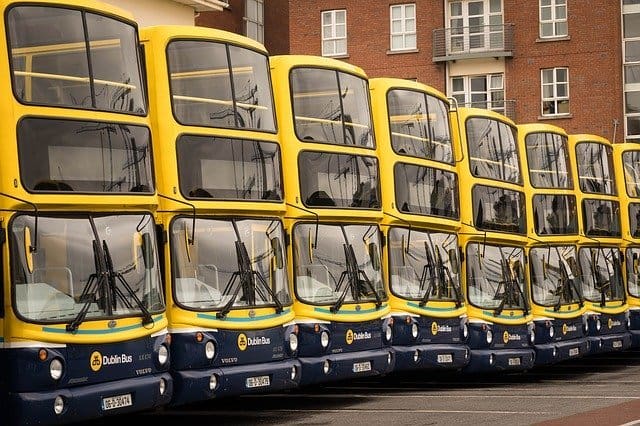In an effort to encourage more people to use public transport, the National Transport Authority (NTA) has announced the introduction of a 90-minute fare across services in Dublin, which will come into effect on Sunday, November 28th.
The second phase of the BusConnects programme will also come into effect in Dublin from this date. This programme will introduce a new ‘C-spine’.
90-minute fare
From November 28th, passengers will be allowed free transfer between Dublin Bus, Luas and most DART, commuter rail and Go-Ahead Ireland services – within 90 minutes of initial use of a Leap Card.
The NTA said that a new flat child Leap fare will be 80 cent – outside of school hours – allowing children to travel anywhere on Dublin City bus, Luas and commuter rail and DART services within the Short Hop Zone, with a free transfer to any mode within 90 minutes of initial touch on.
This is a 20% discount for children using the bus out of school hours, with bigger decreases on other services.
A fare of €2.30 will apply for adults and students when using their card until the end of March 2022.
The new short adult leap fare of €1.60 for single trips up to 3km will allow 40% more passengers to travel slightly further in the new structure.
Any journeys beyond this distance or involving transfers between services that take place within 90 minutes of the start, will be charged at the TFI 90 Minute fare.
BusConnects Programme
The simplified fares structure is one of the key components of the BusConnects programme. The second phase of this programme will also see the introduction of the ‘C-Spine’ from November 28th, which will include routes C1, C2, C3, C4, C5 and C6.
The ‘C-Spine’ will serve the communities of Maynooth, Celbridge, Leixlip, Lucan, Adamstown, Liffey Valley and Palmerstown to the City Centre as well as Ringsend and Sandymount.
Anna Cullen from AA Ireland states that: “The new fares structure and the introduction of the second phase of the BusConnects programme is great for those who rely on public transport in the Dublin area. It is one step closer to improving our network, but we still have a long, long way to go.”
“People are definitely still hesitant to travel on public transport. This may be due to Covid or other personal reasons. So, it’s going to be a slow process urging people back into the system again. But positive measures like this are a step in the right direction.”
Traffic Volumes
Recent figures show that public transport use has decreased significantly since the start of the Covid-19 pandemic.
According to the CSO, the total number of rail and bus journeys is now at 59% of those taken in early March 2020. Figures also show that traffic volumes have increased since the start of this year – up 93% in Dublin and 115% in regional areas.
AA Ireland’s autumn survey found that around 2 in 5 people (41%) say they’re less likely to use public transport now compared to before the pandemic, while 4% say they are more likely to use it now.
The poll also found that 31% of motorists (around 1 in 3) say they’re more likely to drive now, with 34% saying they are more likely to walk to their destination.
“It’s obvious that traffic volumes have increased. So, in terms of tackling congestion, the long term strategy – and there is no substitute for this – is the provision of public transport,” adds Cullen.
“While these new measures are Dublin based, which is great for the area, what we would like to see is the improvement of public transport primarily in rural areas – where people rely on their cars for every day travel.”










